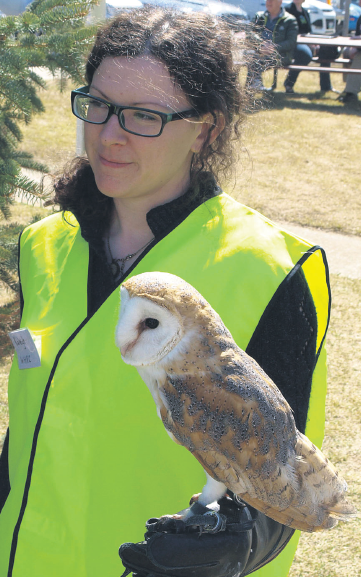The term “raptor”might conjure up “Jurassic Park-like” visions of huge flying dinosaurs, but alas, that is not the case.
Raptor is simply the term used to describe birds of prey.
Each year a massive raptor migration takes place as these magnificent birds return to Manitoba from their wintering grounds.
Usually the best place to view this exciting phenomenon is along the river valleys of southern Manitoba where raptors float high overhead on the thermals created from rising air.
For five consecutive years, the tiny village of La Riviere, located in the Pembina River Valley, has held a festival that celebrates these magnificent birds that are common throughout Manitoba. While the annual celebration is now over for this year, the enthusiasm for these spectacular birds of prey continues until they wing their way south in autumn.
Raptors are birds that hunt for food from the air. They have three general qualities that distinguish them, including keen binocular vision, which allows them to spot their prey while in
flight. They also have a large curved bill and sharp talons to grasp and hold their prey.
During migration, raptors travel long distances with less effort by soaring on the thermals. A thermal is a column of rising air caused by heating of the earth's surface causing upward lift.
Raptors extend their wings and circle upward riding the thermal until losing its lift.
Then they glide to the next thermal and so on, until it reaches the nesting grounds.
Thermals frequently form next to lakes, rivers, and above valleys.
For the past decade, an annual “ hawk watch” was carried out in the Pembina Valley recording the number of migratory raptors. In 2014, they recorded 16 different species of raptors with
a total of 11,327 birds at their count site a short distance north of the Pembina Valley Provincial Park. The most common species recorded was the red-tailed hawk, with 7,720 counted. As
well, the total included 1,454 Bald Eagles, 702 Sharp-shinned and 604 Broad-winged hawks.
To celebrate the importance of raptors, the La Riviere Raptor Festival is held in the Pembina Valley each April. This valley is considered one of the best places to view the spring raptor migration.
The festival centres on monitoring Manitoba’s premiere spring raptor migration and creates awareness of the significance of the Pembina Valley as a migratory corridor for birds of prey, according to the festival brochure.
This year an estimated 500 people attended to marvel at the spring migration and learn more about raptors. Festival events included a display of live birds of prey, guided bird walks,
migration viewing and educational displays.
Live birds on display included a Swainson’s Hawk, American Kestrel, Barn Owl, Burrowing Owl and Great Horned Owl.
While the spring migration is complete, take the time to explore Manitoba this summer and watch for hawks, eagles, turkey vultures, owls and other birds of prey.
Bill Stilwell is an award winning writer and author based in Neepawa, MB. His most recent book, “Manitoba Wild” describes a variety of spectacular nature viewing locations in the Pembina Valley and
throughout Manitoba.
Another of his books, Manitoba Naturally provides details about the Pembina Valley Provincial Park. You can view his website at manitobawild.com or email him at manitobawild@mts.net




